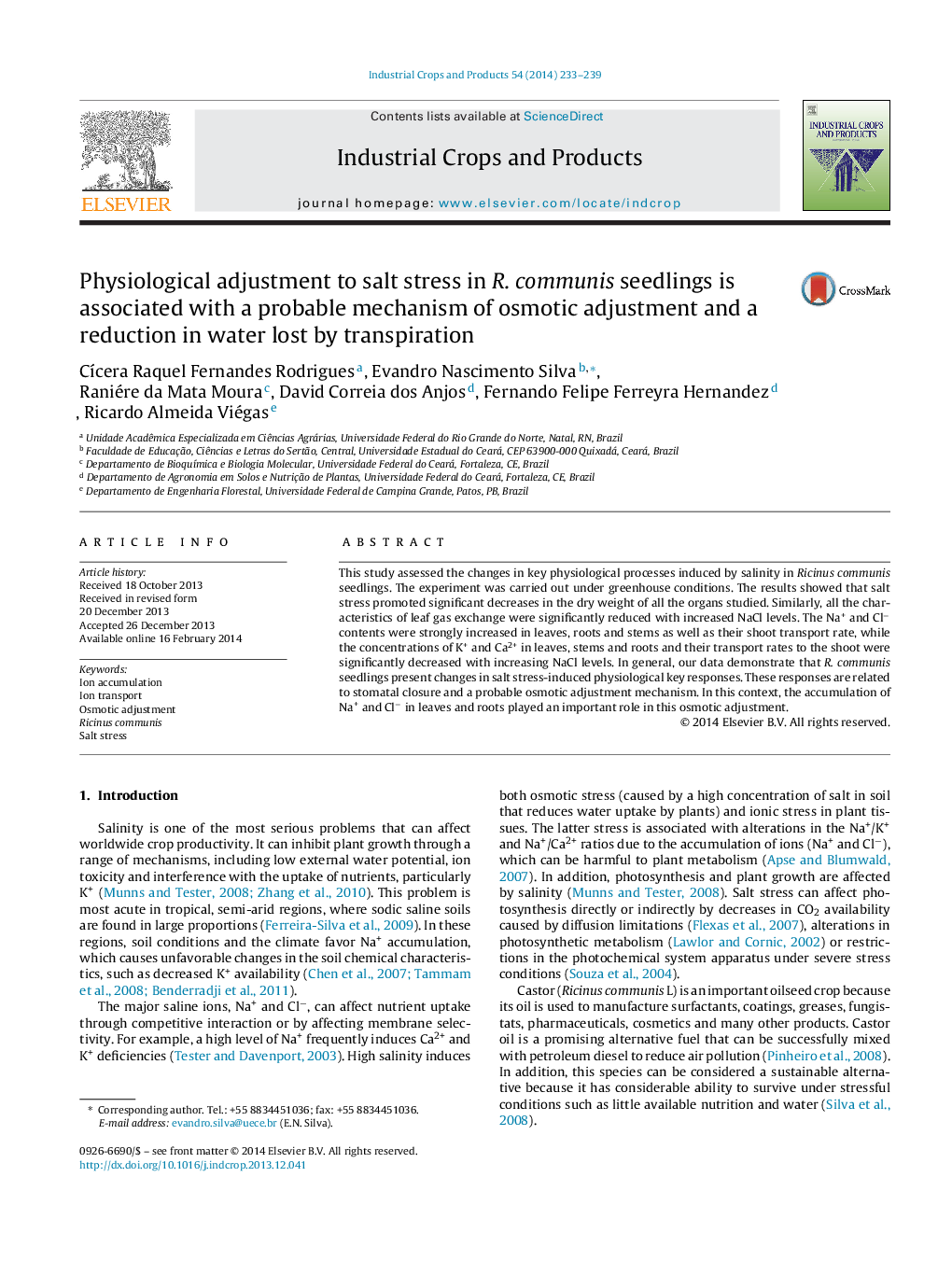| Article ID | Journal | Published Year | Pages | File Type |
|---|---|---|---|---|
| 4513391 | Industrial Crops and Products | 2014 | 7 Pages |
•Stomatal closure and osmotic adjustment are key physiological responses to salt stress displayed by R. communis.•Na+ and Cl− effectively participate in the osmotic adjustment of R. communis to salinity.•The contribution to the osmotic adjustment of Na+ was higher in leaves, while roots contributed to the Cl− osmotic adjustment more effectively.
This study assessed the changes in key physiological processes induced by salinity in Ricinus communis seedlings. The experiment was carried out under greenhouse conditions. The results showed that salt stress promoted significant decreases in the dry weight of all the organs studied. Similarly, all the characteristics of leaf gas exchange were significantly reduced with increased NaCl levels. The Na+ and Cl− contents were strongly increased in leaves, roots and stems as well as their shoot transport rate, while the concentrations of K+ and Ca2+ in leaves, stems and roots and their transport rates to the shoot were significantly decreased with increasing NaCl levels. In general, our data demonstrate that R. communis seedlings present changes in salt stress-induced physiological key responses. These responses are related to stomatal closure and a probable osmotic adjustment mechanism. In this context, the accumulation of Na+ and Cl− in leaves and roots played an important role in this osmotic adjustment.
